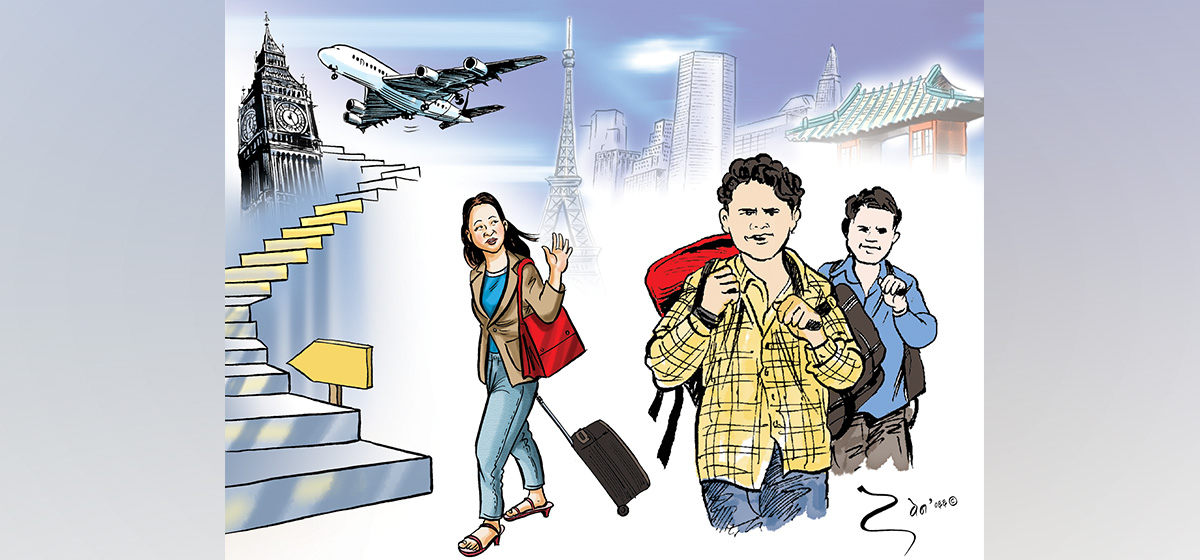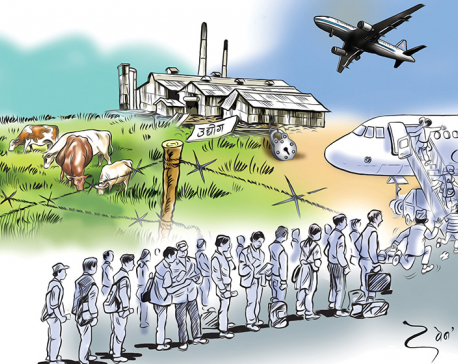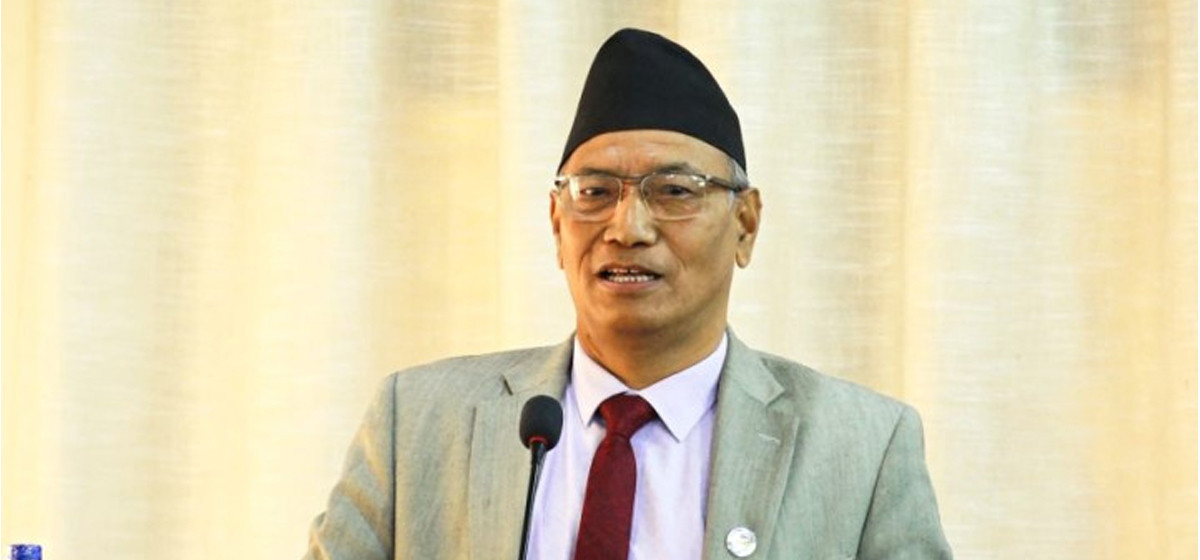
OR
Over 771,000 Nepali youths sought foreign employment in FY 2022/23
Published On: July 27, 2023 03:00 PM NPT By: Sabita Khadka

KATHMANDU, July 27: In the fiscal year 2022/23, a staggering number of more than 771,000 young individuals ventured abroad for foreign employment. The Department of Foreign Employment (DoFE) reported that this figure represents the combined total of new and re-permit workers who obtained work permits during the last fiscal year.
DoFE Spokesperson Gurudatta Subedi revealed that in the preceding fiscal year 2021/22, a total of 637,133 workers had embarked on foreign employment. This indicates a significant increase of 134,214 individuals opting for work permits abroad compared to the previous year.
Analyzing the labor approvals for foreign employment in FY 2022/23, it was observed that the highest number of workers obtained permits in the month of Kartik (mid-October to mid-November), with 78,370 people securing labor approvals. On the other hand, the lowest approvals were recorded in Baisakh (mid-April to mid-May) with 54,457 individuals seeking labor permits.
During Bhadra 2079 BS (mid-August to mid-September 2922), 76,403 individuals pursued foreign employment, followed by 65,462 people in Shrawan (mid-July to mid-August), 71,500 in Asar (mid-June to mid-July), and 68,564 in Mangsir (mid-November to mid-December), respectively.
Similarly, 64,464 people obtained labor approvals in Poush (mid-December to mid-January), and 64,284 in Magh (mid-January to mid-February), while 61,845 secured permits in Falgun (mid-February to mid-March), 61,478 in Chaitra (mid-March to mid-April), 59,422 in Jestha 2080 BS (mid-May to mid-June), and 58,192 in Asar.
It was in the fiscal year 2013/14 that the number of young people seeking foreign employment exceeded 500,000 in a single year for the first time. However, it is essential to consider the impact of the COVID-19 pandemic, which has affected the overall figures.
According to the Foreign Employment Board, more than 600,000 individuals pursued foreign jobs in the year following the pandemic, and this number surged to over 750,000 in the last fiscal year.
Krishna Prasad Bhusal, the information officer of the Ministry of Labor, emphasized that nearly all migrant workers from Nepal fall within the economically productive age group of 18 to 44 years. Over the past three years, half of these migrant workers were between the ages of 25 and 34 years old.
The reported number of work permit-holders does not encompass certain groups of individuals who opt for alternative means of employment abroad, leading to a gap in the data. Not accounted for are individuals who enter Dubai on a visit visa and subsequently acquire a work visa, as well as those who travel to European countries via India without obtaining proper work permits. The statistics also fail to include seasonal workers heading to countries like Korea and the UK, and those who work in India.
The lack of resolution to obstacles in sending domestic workers abroad has resulted in many women seeking employment through illegal channels. As a consequence, women workers are compelled to work in precarious conditions, making their journey abroad even more unsafe. The government's failure to provide arrangements for acquiring work permits for those heading to India further contributes to the exclusion of a significant portion of migrant workers from official data.
Concerns about the safety and well-being of migrant workers have been raised since the financial year 2013/14, when the number of people going abroad for employment surpassed 500,000 for the first time. The following year witnessed a record-breaking figure of over 1,000 reported deaths, marking a critical concern. In the five years before and after that period, the number of reported deaths remained below 1,000. However, starting from the financial year 2020/21, the number of reported deaths has consistently exceeded 1,000, pointing to an alarming trend.
The DoFE officials have identified natural death, cardiac arrest, suicide, and accidents as the primary causes of death among Nepali workers abroad. “However, concerns have been raised about the accuracy of some recorded causes, with instances where deaths are attributed haphazardly to natural causes. This raises questions about the reliability of data on Nepali citizens passing away in foreign countries,” said an employee.
The impact of the COVID-19 pandemic has led to a surge in Nepali youths seeking employment opportunities abroad, as opportunities within the country have become limited. DoFE Spokesperson Subedi acknowledged that a significant number of young people have left Nepal due to the scarcity of job prospects at home. Moreover, many who had returned to Nepal after working abroad for a period are once again seeking opportunities abroad, as they faced challenges in finding suitable employment locally.
“While foreign employment may be a personal aspiration for some, for a considerable number of Nepali workers, it has become a necessity driven by economic circumstances,” he said.
You May Like This

Rising trend: Increasing numbers of Nepali youth seek foreign work opportunities
KATHMANDU, Oct 3: An upward trend in the issuance of work permits for foreign employment reflects the growing desire among... Read More...

Five hundred people were poisoned in Syrian gas attack that killed 43 people including children: WHO
Up to 500 people were poisoned in the Syrian gas attack that killed 43 people including children, the World Health... Read More...

Bank accounts must in Nepal for people heading abroad to work
KATHMANDU, May 29: Those leaving for foreign employment will now be required to open bank accounts before flying abroad. ... Read More...





Just In
- People urged to take caution as Terai region including Lumbini province experiences sweltering heat
- School Principal arrested for allegedly facilitating fake examinees in Grade XII examination
- Stepdaughter arrested on charges of murdering her mother
- Five shops and a vehicle workshop gutted in Shankhamul fire
- Two agreements between private sector entities signed at Nepal Investment Summit
- Shrestha appointed Acting Chairman of JSP
- World Day for Safety and Health at Work being observed today
- Almost all sectors of Nepal are open for foreign investment: NC President Deuba







-1200x560-wm_20240427144118.jpg)





Leave A Comment